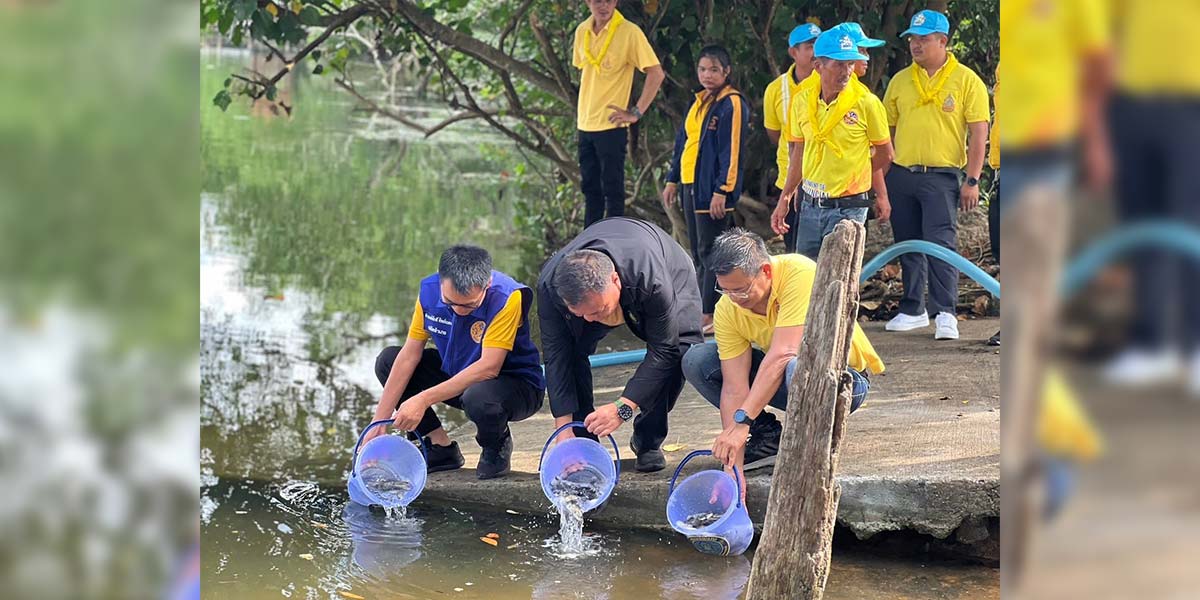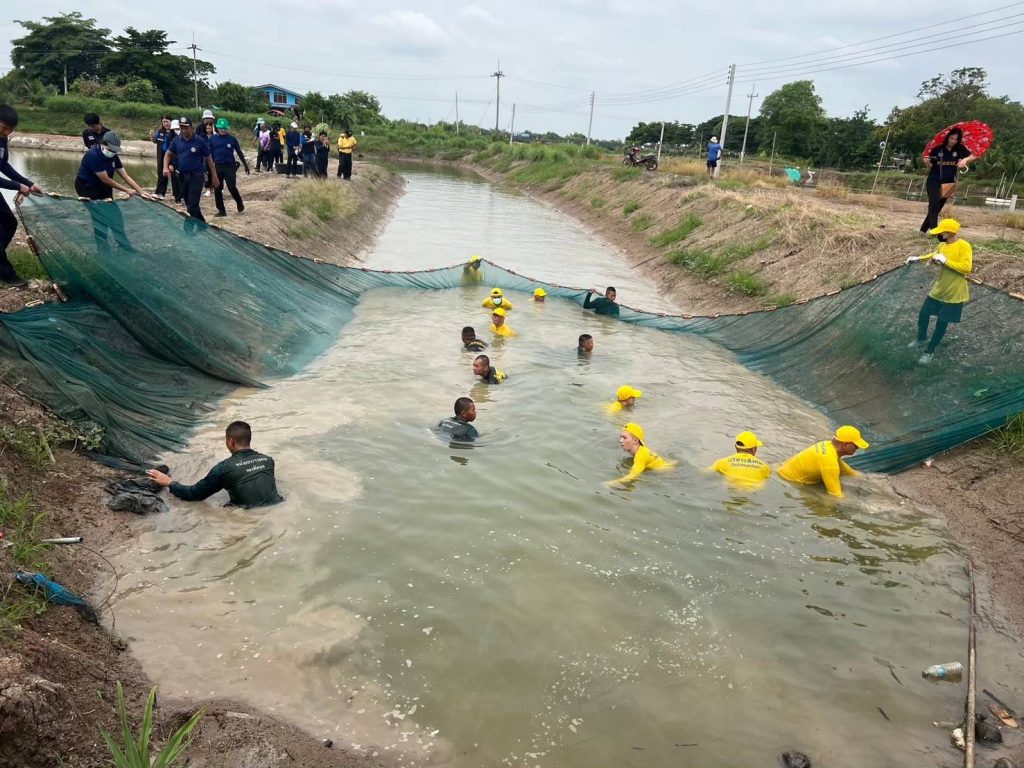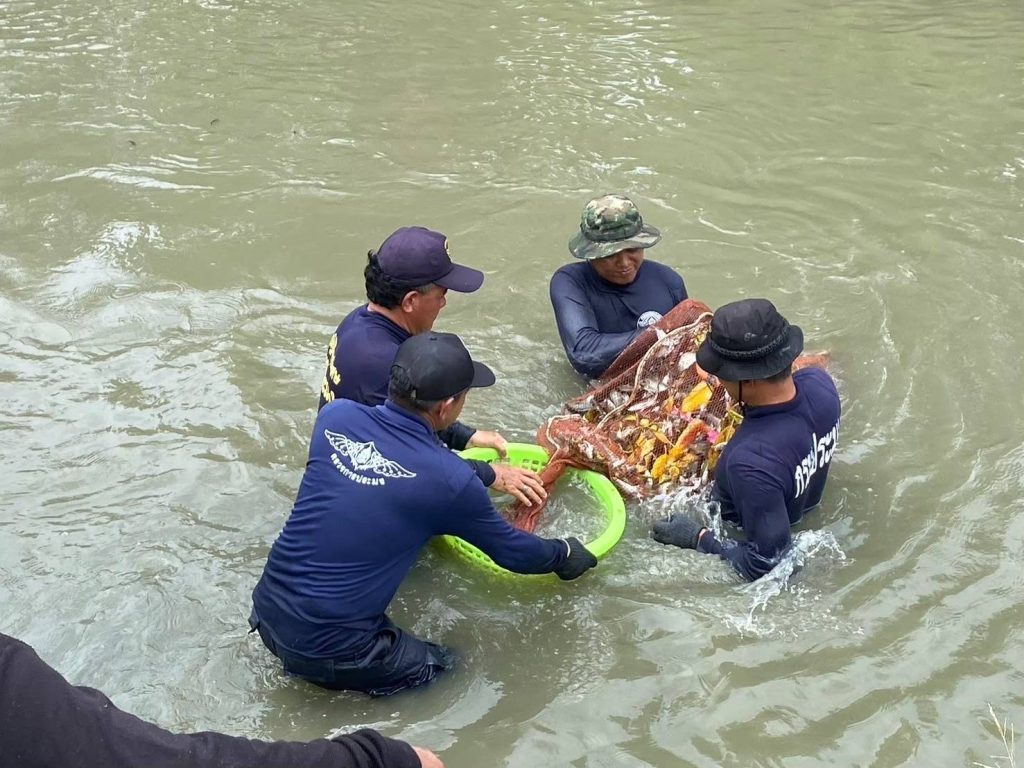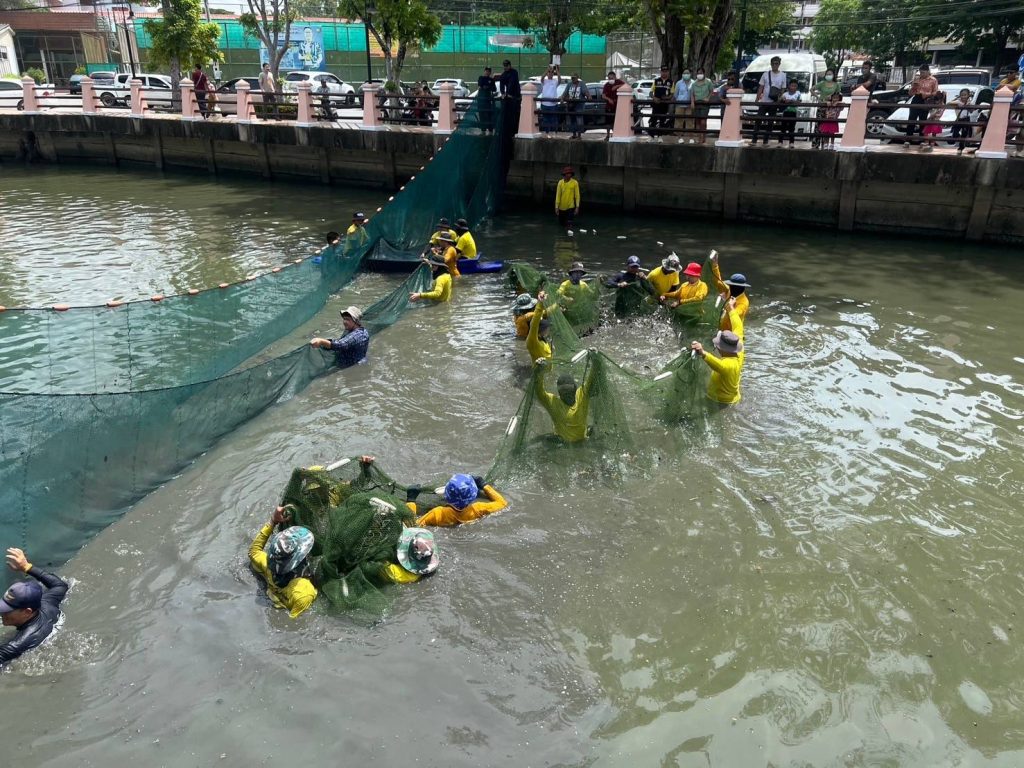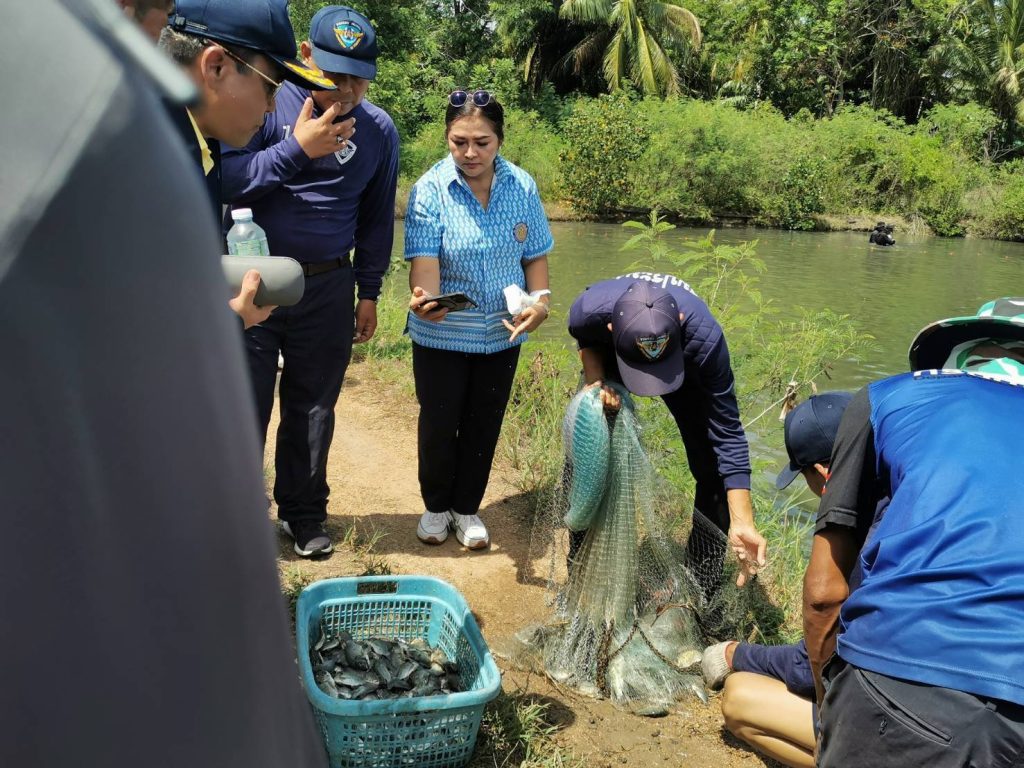Thailand is making significant progress in its battle against Blackchin tilapia, with collaborative initiatives to turn a problem into an opportunity. A multi-stakeholder effort led by the Department of Fisheries (DOF), supported by major corporations such as Charoen Pokphand Foods Public Company Limited (CP Foods), transforms this environmental challenge into a pathway for sustainable development and local economic growth.
In February 2025, the DOF announced a breakthrough in controlling the invasive Blackchin tilapia with the introduction of a specially engineered strain known as Blackchin Tilapia 4n—a genetically modified variant designed to inhibit reproduction. DOF has commenced testing the release of male Blackchin Tilapia 4n at experimental sites this month to evaluate its effectiveness in reducing the invasive fish population.
Additionally, the government is launching Phase II of the Rubber Authority of Thailand’s initiative with a THB 12 million budget for the purchase of Blackchin tilapia to convert into bio-fermented fish for rubber plantations. The initiative will start on February 2025, allowing fishermen to sell captured blackchin tilapia for THB 20 per kilogram. This marks significant progress in the integrated collaboration between the government, private sector, communities, and farmers aimed at systematically and sustainably controlling the spread of Blackchin tilapia.
The programs form part of a five-point government strategy to address the ecological challenges posed by invasive species. Measures include eradicating fish from all Thai waters, biological control such as releasing predatory fish and innovative approaches like inducing sterility in invasive fish, and extensively monitoring blackchin tilapia movements in buffer zones and border areas. Public education efforts are also being ramped up to raise awareness about the risks of cultivating or releasing invasive fish.
As a result of these ongoing efforts, the Blackchin tilapia population survey in December 2024 has visibly declined, and the number of affected provinces has decreased from 19 to 17. This demonstrates that the continuous implementation of these measures is yielding concrete results in reducing the spread of this invasive species.
Several significant initiatives aim to lessen the impact on aquatic farmers. One such initiative is the “One in Ten” Project, spearheaded by the Samut Songkhram Provincial Fisheries Office. This program assists farmers in reducing costs by introducing natural predators into aquaculture ponds, effectively managing the Blackchin tilapia population. The “Seabass Fund for Farmers” was established by the Phetchaburi Provincial Fisheries Office to support small-scale farmers with revolving funds for purchasing seabass fingerlings. This initiative aims to increase the population of natural predators, providing a sustainable solution for shrimp, fish, and crab farmers operating in semi-natural systems to control and reduce Blackchin tilapia. The fund helps farmers maintain productivity and achieve their aquaculture targets more effectively.
In addition to eradication efforts, adding value to Blackchin tilapia is through food processing and product development. Various products, such as fish sauce, fermented fish (Pla ra), northern Thai sausages, and pickled fish (sour fish), have been introduced to promote consumption, create community-based products, and generate income—ultimately driving local economic growth. These efforts highlight the power of research-driven innovation and cross-sector cooperation in tackling environmental challenges sustainably. By integrating innovation with community engagement, this project not only addresses the environmental impact of Blackchin tilapia but also transforms it into a source of economic and agricultural sustainability.
These initiatives are progressing through the collaboration of multiple agencies, including the Rubber Authority of Thailand, the Department of Land Development, the Department of Corrections, and the Royal Thai Police, The Royal Thai Army. Apart from governmental authority, private sector involvement plays a crucial role in tackling the Blackchin Tilapia crisis. Sirisaeng Arampee Fishmeal Factory in Samut Sakhon has stepped up by purchasing Blackchin tilapia for fishmeal production, while Charoen Pokphand Foods (CP Foods) has launched five key initiatives to support the Department of Fisheries in controlling and eradicating this invasive species.
These initiatives have been implemented by CP Foods throughout 2024, including the purchase of 2 million kilograms of Blackchin tilapia for fishmeal production. Additionally, the program provides 200,000 seabass fingerlings to be released into natural water bodies as predators to help control juvenile Blackchin tilapia. Support has also been extended to fishing activities aimed at removing Blackchin tilapia from their natural habitats by supplying fishing equipment and necessary materials to participants. Furthermore, collaborations with academic institutions are underway to develop food processing innovations and explore new technologies and strategies for long-term population control.
In 2025, CP Foods continued supporting the Department of Fisheries in controlling the spread of Blackchin tilapia through various initiatives, including large-scale fish removal from natural water bodies, the promotion of natural predators, and the development of value-added uses. One key initiative, in collaboration with the Department of Fisheries and the Department of Corrections, involves processing Blackchin tilapia into fish sauce, creating both economic and environmental benefits.
The partnership between government agencies, the private sector, and local communities has already shown tangible results, with a clear goal of restoring biodiversity and raising public awareness. This collective effort empowers communities to actively monitor and report sightings of the fish through the “See, Report, Catch, Resolve” initiative, ensuring effective removal while encouraging its use as a food source—directly benefiting both the ecosystem and local livelihoods.
This collaborative approach to managing the Blackchin tilapia challenge in Thailand exemplifies a model of structured and systematic cooperation, transforming environmental threats into sustainable opportunities while safeguarding ecological diversity.

